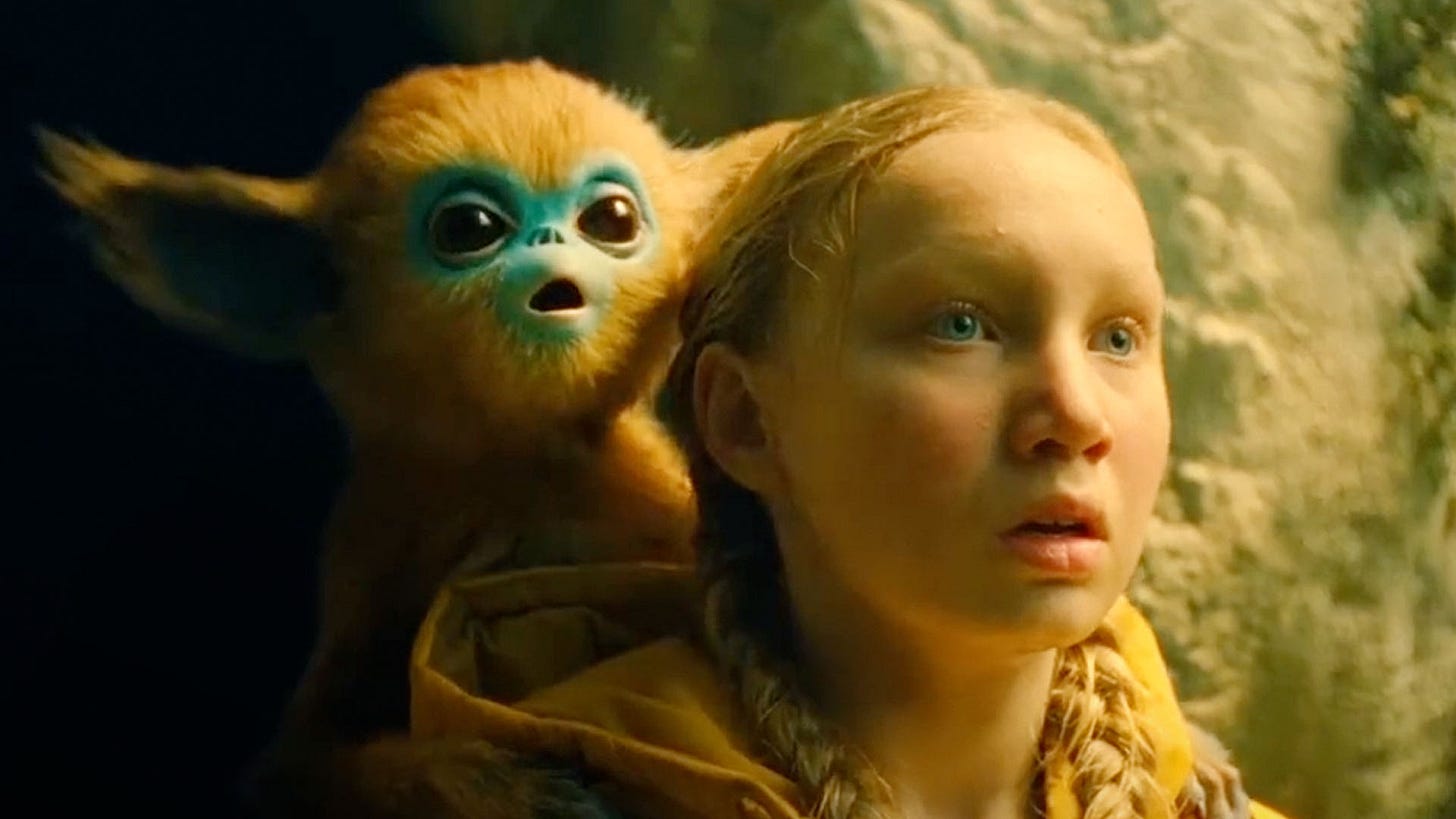The Legend of Ochi
Even if its themes are familiar, this magical fable about the unlikely friendship between a girl and a goblin mixes the fantastical with hyperreal concepts about xenophobia.
I was pretty arrested by the trailers for “The Legend of Ochi,” even if its themes seem very familiar. A young girl befriends the cub of their most hated enemies, the goblins, and together they wind up teaching both tribes something important about opening their hearts to strangers.
“E.T. the Extra-Terrestrial” meets “Grimms’ Fairy Tales,” was my initial take.
The look of the film is a mix of the fantastical and hyperreal. There are splendid, vibrant colors and also dour, dank and scary corners. Set in the semi-historical, semi-mythological kingdom of Carpathia, it was shot in Romania and Transylvania, with a vaguely Germanic/Slavic slant to the whole piece. I’m guessing they used CGI to enhance and expand the mountains, forests and other already impressive physical features.
If Hobbiton and Mordor ever got scrambled together, this is what it would look like.
The time setting could be anywhere from 1870 to modern day. The Carpathians are a largely scattered, agrarian society but have some machinery and vehicles, though they tend to be either monstrous combines or boxy, cheap-looking cars like they used to manufacture in the Soviet Union.
There’s even a Kurkmart grocery store with modern barcode scanners and such. Seemingly everyone carries a gun, or has one near at hand, though mostly archaic flintlock rifles. When one character pulls out some medieval-style armor to don, no one thinks this out of place.
This is Maxim (Willem Dafoe), an old warrior and the leader of a quasi-military outfit made up of castoff boys volunteered by poor families. Think the Night’s Watch in the “Game of Thrones” world. Their duty is to hunt the goblins that sometimes kill the people’s livestock. They rarely seem to ever actually kill or capture a goblin, or Ochi as they call them, and Maxim is content to ward them off.
Finn Wolfhard plays Petro, the oldest boy among the recruits and Maxim’s stalwart lieutenant. The central character is Maxim’s daughter, Yuri (Helena Zengel), who appears to have been recruited into this all-male coterie by default. Around age 12, she’s rather quiet and pensive, and there’s a rift between her and her father over her mother, Dasha (Emily Watson), about whose fate Maxim has offered varied and unconvincing accounts.
“The Ochi took my wife,” is the gist.
Writer/director Isaiah Saxon, who comes from a background of animation and music videos, makes a strong feature film debut. He makes the interesting choice to not obfuscate the Ochi and reveal them in dribs and drabs over the course of the movie, but give us a pretty clear look early on during a fight with Maxim’s crew.
They are vaguely man-like in stature with reddish fur, bright blue-green faces, Yoda-like ears and mammoth, depthless black eyes. Their most notable other feature is their speech, a series of musical trills and howls that can seem simultaneously frightening and thrilling.
Yuri discovers the young Ochi caught in one of the many traps they leave about for them. Perhaps because he’s tiny and doesn’t seem threatening, she decides to help him. She returns briefly to their headquarters to patch up his wounds, but not before they’re discovered by Petro. Yuri flees with the Ochi and the chase takes up the rest of the story. Her quest is to return the goblin to its mother.
During one manic encounter, the Ochi bites Yuri on the arm in a panic and it soon swells up into an ugly, purple-ish mess that appears to be life-threatening, or at least require amputation. Luckily, serendipitous help arrives to heal her and allow Yuri to continue on her journey. There is also an unexpected result of this mishap that fundamentally changes her relationship with the Ochi.
The creature appears to be rendered mostly through puppetry with perhaps a digital assist, and the result is a very tactile and authentic sense of the physical and emotional relationship between goblin and girl. He mostly rides around in her backpack to start, but as time goes on and trust builds, they become more like partners than owner and pet.
Zengel plays things very low-key and undemonstrative as Yuri. We sense she’s not a “normal” kid and that’s the big reason why she can build a rapport with the Ochi someone like her father or even Petro never could.
I will say I found her very soft voice and German accent hard to understand at times. A couple other supporting characters seem to take her cue and are similarly challenging to comprehend to the point I wished for subtitles. Granted, my hearing is wonky but my 11-year-old also struggled.
Like most fables, “The Legend of Ochi” has a lesson to impart, and it’s pretty much worn on the sleeve: don’t hate those who are different from you, be welcoming to outsiders. In a time where xenophobia seems to be increasingly embraced rather than waning, it’s a hopeful note that rings out with joyful clarity.
“The Legend of Ochi” had a limited theatrical release on April 18 and will go wide on the 25th.





